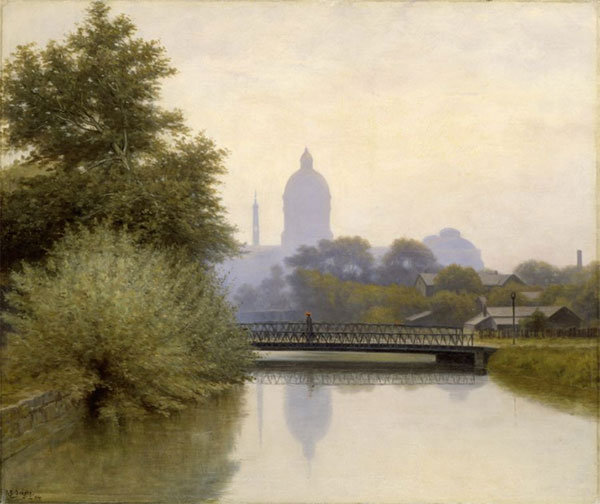Between 1877 and 1902, Indiana experienced a localized Renaissance of artistic production that has left an enduring legacy for the Hoosier State. Celebrating this achievement, the Indianapolis Museum of Art has a number of these outstanding works on view.
On view through May 14, 2017, “A Land Enchanted” is a gorgeous exhibition at the Indianapolis Museum of Art that tells the tale of the Hoosier State’s cultural efflorescence between 1877 and 1902. The museum writes, “Popularly referred to as the state’s Golden Age, this period is often remembered for the numerous contributions of Hoosier authors, including Theodore Dreiser, Meredith Nicholson, James Whitcomb Riley, Booth Tarkington, and Lew Wallace. Coincident with their literary achievements, Indiana’s men and women made a mark equally on the visual arts.”
Composed of works from the museum’s permanent collection, “A Land Enchanted” displays a number of outstanding works of art, including paintings and sketchbooks by William Merritt Chase, James F. Gookins, John Washington Love, the Hoosier Group, and others.
“A Land Enchanted” will be on view through May 14, 2017. To learn more, visit the Indianapolis Museum of Art.
This article was featured in Fine Art Today, a weekly e-newsletter from Fine Art Connoisseur magazine. To start receiving Fine Art Today for free, click here.
Indiana’s Cultural Efflorescence







